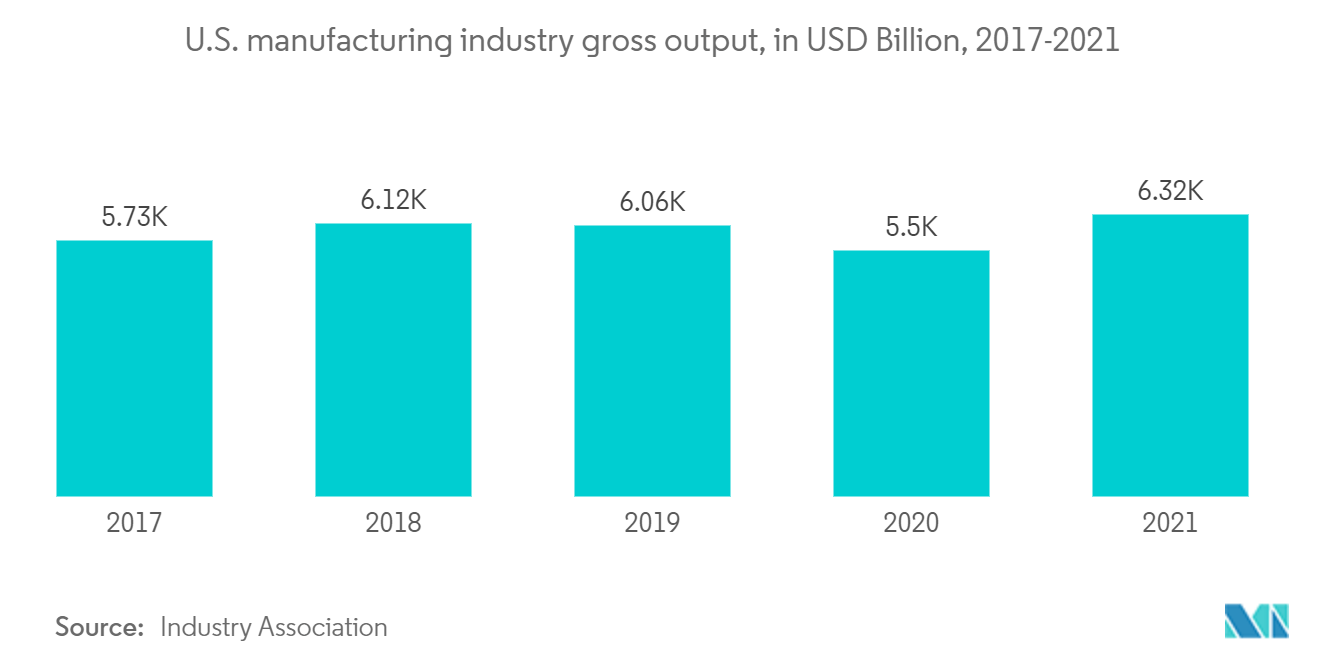Market Trends of United States Machine Tools Industry
This section covers the major market trends shaping the US Machine Tools Market according to our research experts:
Increasing demand for domestic machine tools driving the market
SMBs (Small and medium-sized enterprises) make up the majority of machine tool producers in the U.S. Although widely spread across the nation; they are concentrated in the industrial hubs surrounding the Great Lakes in the Midwest, California, and Texas. The Midwest is renowned for its industrial manufacturing, which encompasses nine states and contributes to 44% of the nation's machine tool production.
Construction, mining, energy, and other markets are included in the U.S. machine tool application industry and industrial machinery, vehicles, and aerospace & defense. Small and medium-sized businesses benefit when machine tool manufacturers concentrate on a particular product area rather than creating numerous machines.
As per industry statistics, the amount of new capital equipment orders placed by machine shops and other manufacturers fell to USD 391.92 million in July 2022, a -6.1% decrease from June 2022 and a -14.3% decline from July 2021, but new orders are still up on an annual basis. The July totals indicate the lowest monthly total in each category for the current calendar year and the fourth consecutive month of declining machine unit totals and overall order values.
U.S. industrial technology orders have been active for seven months. With approximately 14,700 machine tools ordered, they have reached a USD 3.22 billion total, 8.7% more than the order total from January to July 2021. The Assn. for Manufacturing Technology's monthly U.S. Manufacturing Technology Orders report, a summary of national and regional data on sales of metal-cutting, metal-forming, and -fabricating machines, provides information on new machine-tool orders.

Growth of manufacturing sector driving the market
At the start of the pandemic, supply chain problems, infections, closures of institutions and businesses, and other global socio-economic repercussions impacted both businesses and people. Manufacturing in the United States experienced a significant setback in Q2 2020, along with the rest of the economy, as a result of a nationwide shutdown that led to massive layoffs, ineffective logistics, a decline in production, and budget deficits.
The manufacturing industry in the United States is through a time of rapid development and transition as new technology and international standards are introduced into the market. The sector is dealing with several issues, including an ageing workforce, declining productivity and rising labour costs, growing competition from emerging economies, and ageing manufacturing infrastructure.
Manufacturers are looking for ways to increase productivity, lower costs, and improve the effectiveness of their supply chain networks in response to these issues. As a result, they are using technology to address these problems. Even though automation is a crucial element for success in the manufacturing industry, a recent Inkxpert market analysis indicated that just 30% of manufacturers feel that it would be a key component of their future company plan over the next five years.


